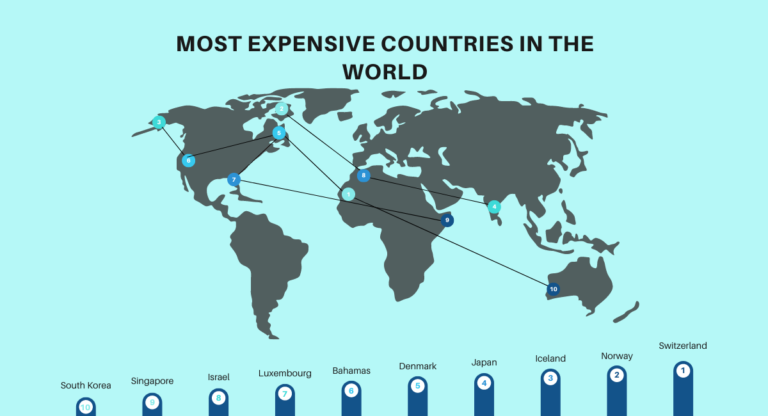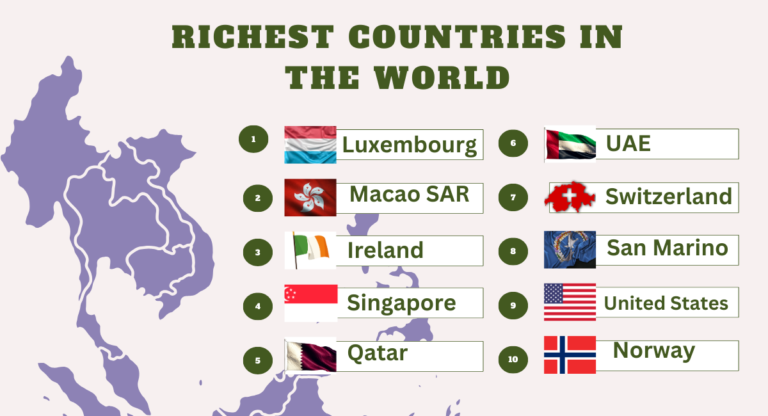Which Are the Cheapest States to Live in America?
When considering a move, the cost of living is often a top priority. For those seeking affordability without sacrificing quality of life, exploring the cheapest states to live in America can reveal hidden gems across the country. These states offer a lower cost of housing, groceries, healthcare, and utilities, allowing residents to stretch their dollars further. Whether you’re a retiree looking to maximize your savings, a young professional starting, or a family seeking a budget-friendly environment, these states provide a range of benefits.
From charming small towns to bustling urban centers, the most affordable states have diverse landscapes, rich cultural experiences, and ample job opportunities. In this article, we’ll go over the cheapest states to live in, highlighting what makes each one unique and why they might be the perfect fit for your next home.
Let’s begin.
A List of the 10 US States with the Lowest Cost of Living
The top ten US states with the lowest cost of living are listed below.
- Mississippi
- Kansas
- Alabama
- Oklahoma
- Georgia
- Tennessee
- Missouri
- lowa
- West Virginia
- Indiana
1. Mississippi
Mississippi is the least costly state in the United States to live in, with a cost of living index of 83.3, 17% lower than the national average. Housing costs are particularly affordable, with the state having the lowest housing costs in the nation. The median price for a single-family home is $157,828, and the average rent for a two-bedroom apartment is $991. Mississippi also has the lowest transportation costs in the US, scoring an 86.7 on the transportation index. Other expenses, such as groceries (92.2), utilities (90.4), health (94.7), and miscellaneous costs (90.9), also fall below the national average.
However, these financial benefits come with significant drawbacks. In the United States, Mississippi has the greatest rate of poverty, with about 20% of its citizens living at or below the federal poverty level. The state consistently ranks poorly in terms of economic and educational opportunities. For a family of four to meet their basic needs, an annual income of $75,462.40 is required, yet the median income for a family is only $44,966. Despite its affordability, Mississippi’s economic challenges and educational shortcomings make it one of the most difficult states to thrive in.
2. Kansas
Kansas is notable for having the second-lowest cost of living in the United States, with an index of 86.5. Housing costs are particularly advantageous, being 28% below the national average and ranking as the third-lowest in the country. The average price for a single-family home is $198,199, while the monthly rent for a two-bedroom apartment averages $995. Additionally, groceries and transportation expenses in Kansas are also lower than the national average, with indexes of 91.7 and 97.3, respectively.
Utilities and health costs are closer to the national average, with utilities at 100.2 and health expenses at 100.4. Miscellaneous costs are also quite affordable at 88.4. The living wage for a family of four in Kansas is estimated at $76,252.80 per year, slightly higher than the median family income of $72,815. In spite of this, Kansas has one of the lowest unemployment rates in the nation—just 2.5%—and a poverty rate that is marginally lower than the national average. This combination of low living costs, reasonable housing prices, and a strong job market makes Kansas an attractive option for families and individuals seeking an affordable yet stable environment.
Also Read: 11 Richest Countries in Europe
3. Alabama
Alabama ranks as the third cheapest state to live in the United States, with a cost of living index of 87.9. Housing costs are significantly lower than the national average, with the average single-family home priced at $194,695 and the average rent for a two-bedroom apartment at $1,005. While utilities (100.7) and groceries (98.2) hover near the national average, the state benefits from some of the lowest health (91.2) and transportation (92.7) costs in the country. Miscellaneous expenses also remain affordable, with an index of 94.3.
Despite these economic advantages, Alabama faces challenges. A family of four requires an annual income of $77,064 to meet their needs, yet the median income for such a family is $54,393. Additionally, Alabama has one of the highest poverty rates in the nation, with 15.6% of residents living at or below the poverty line. While Alabama’s low cost of living can provide significant financial relief, the high poverty rate and the gap between the living wage and median income present considerable obstacles for many residents.
Also Read: Best Places To Live In Alabama
4. Oklahoma
Oklahoma is the fourth least costly state in the US to live in, with a cost of living index of 87.9. Housing costs are significantly lower than the national average, with prices being 25% cheaper, making it the fourth most affordable state for housing. The median home price is $171,057, and the average rent for a two-bedroom apartment is $999 per month. Groceries and healthcare are also among the most affordable in the nation, with indexes of 94.5 each. Additionally, utilities (95.1) and transportation (94.8) costs are relatively low, contributing to the overall affordability.
However, there are notable economic challenges in Oklahoma. The median income for a family of four is $52,341 per year, while the living wage needed to meet basic expenses for the same family is $77,126.40. This income disparity likely contributes to the high poverty rates in the state, with 15% of residents living at or below the poverty line and nearly 20% of children in poverty. Oklahoma consistently ranks as one of the worst states to live in due to these economic struggles and other quality-of-life issues. Despite its low cost of living, many residents face significant financial hardships.
5. Georgia
Georgia ranks as the fifth cheapest state to live in the United States, with a cost of living index of 88.8. Housing costs are particularly low, 25% below the national average, making it the fourth most affordable state for housing. The average cost for a home is significantly reduced, allowing over 40% of residents to afford new homes. Monthly rents and utility costs also contribute to affordability, with the average utility bill being $367.63. Transportation costs are among the lowest in the country, with an index of 92.6.
Groceries (95.9) and health expenses (96.7) in Georgia are close to the national average, while miscellaneous costs (97.1) are slightly higher but still manageable. Despite Georgia having the lowest minimum wage in the nation at $5.15 per hour, the state’s salaries generally cover living expenses. The median income for a family of four is $58,952 annually. However, the living wage for a family of four is calculated to be $79,955.20 per year, indicating a significant gap that may pose financial challenges for many families. This income disparity suggests that while Georgia’s overall cost of living is low, many residents may still struggle to meet their basic needs.
6. Tennessee
Tennessee ranks as the sixth cheapest state in the United States, with a cost of living index of 89.0, making it 11% lower than the national average. Housing costs are particularly affordable, being 21% below the national average. A typical single-family home in Tennessee costs $276,963, and the average rent for a two-bedroom apartment is $1,138 per month. Utilities are also reasonably priced, with the average household spending $256.83 per month. Transportation costs in Tennessee are the second-lowest in the nation, with an index of 88.8, and healthcare costs are the fifth-lowest, with an index of 91.2. Grocery expenses are also relatively low, with an index of 94.7 and miscellaneous costs of 94.2, further contributing to the state’s affordability.
Despite these financial advantages, Tennessee faces economic challenges. The living wage for a family of four is $74,692.80 per year, while the median income for the same family is $54,665, indicating a significant income gap. The state’s unemployment rate is relatively low at 3.4%, but the poverty rate stands at 13.8%. This disparity suggests that while Tennessee’s cost of living is low, many families still struggle to meet their basic needs.
Must Read: Strongest Countries in the World
7. Missouri
Missouri ranks as the seventh-cheapest state in the United States, with a cost of living index of 89.8, which is 10.2% lower than the national average. Housing costs are particularly affordable, being 20% below the national average. A typical single-family home in Missouri costs $218,208, and the average rent for a two-bedroom apartment is $963 per month. Utilities are also reasonably priced, with the average household spending $363.80 per month. Transportation costs in Missouri are low, with an index of 92.4, and healthcare costs are also affordable, with an index of 94.6. Grocery expenses are relatively low, with an index of 95.0 and miscellaneous costs of 93.3, further contributing to the state’s affordability.
Despite these financial advantages, Missouri faces economic challenges. The living wage for a family of four is $77,792 per year, while the median income for the same family is $61,901, indicating a significant income gap. However, the state’s minimum wage of $11.15 per hour is one of the highest in the country, providing some relief for low-income workers. Missouri’s cost of living is low across all metrics, making it an attractive option for individuals and families seeking affordability without compromising on quality of life.
8. lowa
Iowa ranks as the eighth-cheapest state to live in the United States, with a cost of living index of 89.9, making it a highly affordable option. Housing costs are notably low, with an index of 76, the sixth-lowest in the nation. A typical single-family home in Iowa costs an average of $183,418, while the average rent for a two-bedroom apartment is $895 per month. Utilities are also affordable, costing an average household $336.24 per month. Iowa’s cost of living is lower than the national average across all metrics. Groceries have an index of 98.4, utilities are at 94.9, transportation costs are 97.7, healthcare is 94.6, and miscellaneous expenses come in at 93.3. This broad affordability makes Iowa an attractive state for individuals and families looking to stretch their dollars further.
The median income for a family of four in Iowa is $68,469, which is below the living wage required to meet basic needs, estimated at $76,440 annually. Despite this income gap, Iowa’s poverty rate is 9.1%, lower than the national average, indicating a relatively lower level of economic hardship compared to other states. Iowa’s combination of low living costs and moderate-income levels makes it a viable choice for those seeking affordability and a reasonable quality of life.
9. West Virginia
West Virginia ranks as the ninth-cheapest state to live in the United States, with a cost of living index of 90.5, making it an affordable place to reside. The state’s housing costs are particularly low, with an index of 78.6, the ninth-lowest in the country. The typical single-family home costs $129,103, while the average rent for a two-bedroom apartment is $732 per month. This affordability means that 43.5% of residents can afford to buy a house. West Virginia also boasts low costs for transportation and healthcare, with indexes of 92.2 and 88.1, respectively.
Utility costs are also relatively low, with an index of 89.4. Groceries and miscellaneous expenses are closer to the national average, with indexes of 96.5 and 99.7, respectively. West Virginia still has a lot of obstacles in spite of these financial benefits. The median income for a family of four is $51,615, which falls short of the $76,273.60 required to meet basic needs. Additionally, West Virginia has the fourth-highest poverty rate in the nation, with 16% of residents living at or below the poverty line. The state also ranks among the poorest US states in terms of economic opportunities, educational outcomes, and infrastructure, making it one of the worst states to live in despite its affordability.
10. Indiana
Indiana ranks as the tenth-cheapest state to live in the United States, boasting a cost of living index of 90.6, which is 9.4% lower than the national average. This affordability extends across all categories, with housing costs particularly notable. With an average price of $210,166 for a single-family home and $1,016 monthly rent for a two-bedroom apartment, Indiana has the sixth lowest cost of living in the country. Utilities are slightly below the national average, contributing to overall affordability. Healthcare and transportation costs in Indiana are among the lowest in the country, with indexes of 94.6 and 98.3, respectively. Groceries (92.7) and miscellaneous expenses (96.8) are also below the national average, further enhancing the state’s affordability.
Despite these advantages, Indiana faces economic challenges. The median income for a family of four is $66,360 annually, while the living wage required to meet basic needs is $76,398.40 per year. This income disparity suggests that many families may struggle to cover their expenses adequately. Nonetheless, families and individuals looking to stretch their wages further and maintain a respectable standard of living may find Indiana to be an appealing alternative due to its low cost of living.
Final Words
In conclusion, understanding the cost of living across different states in the United States provides valuable insights for individuals and families considering relocation or seeking financial stability. Some of the cheapest states to live in America, like Mississippi, Kansas, and Alabama, offer low living costs, particularly in housing and daily expenses, making them attractive for budget-conscious residents. However, challenges such as higher poverty rates in some states underscore the complex relationship between affordability and overall quality of life.
Whether prioritizing affordable housing, low healthcare costs, or manageable daily expenses, each state’s unique economic landscape offers opportunities and considerations that can significantly impact residents’ financial well-being and overall happiness. Making informed decisions based on these factors can help individuals find the right balance between affordability and the amenities that contribute to a fulfilling life.
FAQs
Which Is the Most Expensive State in Which to Live in America in 2024?
Hawaii consistently ranks as the most expensive state in which to live in the United States. Factors contributing to its high cost of living include expensive real estate, high costs of goods and services due to its remote location and reliance on imports, and a robust tourism industry that can drive up prices. Housing costs in Hawaii are particularly sky-high, with median home prices and rental rates significantly higher than the national average.
Which US State Ranks as the Most Peaceful in 2024?
Maine claims the title of the most peaceful state in the US for the 11th year in a row, as per the United States Peace Index.
Which Cities in California Offer the Most Affordable Living Options?
Cities like Bakersfield, Chico, Clovis, Eureka, Fontana, Fresno, and Sacramento are among the most affordable areas to live in California. These cities typically have lower housing costs and living expenses compared to more expensive regions like Los Angeles or San Francisco, making them attractive options for budget-conscious residents.
What Are the Key Differences in the Cost of Living Between Texas and Florida?
Yes, Texas has a lower living cost than Florida. Texas often boasts a cost of living index below the national average, making it more affordable for residents. Additionally, the median listing price for a house in Texas is $274,500, which is lower than the $300,000 median listing price in Florida. These factors contribute to Texas being perceived as more cost-effective in terms of housing and overall living expenses compared to Florida.
What State Is Known for Being the Most Tax-Friendly?
Wyoming is exceptionally tax-friendly for retirees. Residents are exempt from state income tax, which also applies to Social Security benefits, public and private pensions, and dividends from retirement accounts. This makes Wyoming an attractive destination for those seeking to minimize their tax burden during retirement.

I’m Sophia Jones, an adventurer at heart from New York City, USA. I live for travel and exploration, always eager to discover new places, meet fascinating people, and try out diverse cuisines. Over the past few years, I’ve traveled to numerous countries, immersing myself in different cultures and creating unforgettable memories.






